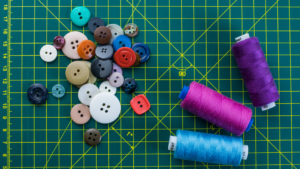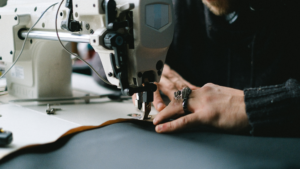Last Updated on January 10, 2023
Are you looking for the best sewing machine for quilting? In this guide, we will show you which ones will work for you.
When you buy through links on our site, we may earn an affiliate commission. As an Amazon Associate I earn from qualifying purchases.
Quilting is the art of sewing two more layers of fabric together. It can be done by hand or by a sewing machine. Generally most sewing machines these days have quilting features added to them. But the machines only for quilting are made industrially. They are not very suitable for household use.
The most sensible thing for you to do is buy a sewing machine that can do them all: quilting and regular sewing. But there are a few machines for quilting only, you can buy them too. Here in this article, we shall help you find the best sewing machine for quilting by guiding you to learn what to look for and what type of sewing machine suits you best.
After that, you will be able to choose for yourself what kind of sewing machine you want to buy. We also provided some reviews of the top-rated sewing machines for quilting for you.
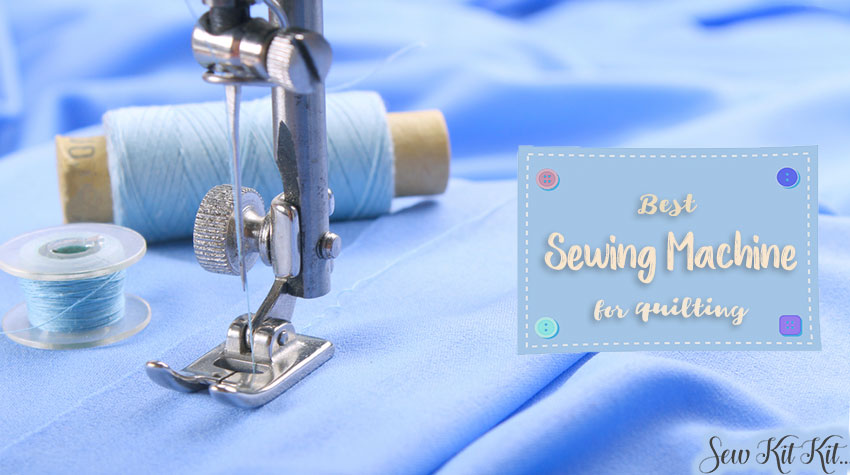
Out Top Picks For Best Sewing Machines for Quilting
| Image | Title | Buy |
|---|---|---|
 Top
Top | SINGER | Quantum Stylist 9960 Computerized Portable Sewing Machine with 600-Stitches, Electronic Auto Pilot Mode, Extension Table and Bonus Accessories, Perfect for Customizing Projects | Check Price! |
 Top
Top | Janome 2212 Sewing Machine Includes Exclusive Bonus Bundle | Check Price! |
 Top
Top | Brother HC1850 Sewing and Quilting Machine, 185 Built-in Stitches, LCD Display, 8 Included Feet | Check Price! |
 Top
Top | SINGER | Confidence 7469Q Computerized & Quilting Sewing Machine with Built-In Needle Threader, 98 Built-In Stitches - Sewing Made Easy | Check Price! |
 Top
Top | Juki HZL-F600 Computerized Sewing and Quilting Machine | Check Price! |
 Top
Top | JUKI TL-2000Qi Sewing and Quilting Machine | Check Price! |
1. SINGER 9960 Computerized Portable Sewing Machine
- SINGER COMPUTERIZED SEWING MACHINE: The SINGER Quantum Stylist 9960 portable sewing machine has loads of ease-of-use features to allow you to fulfill your creative dreams Has a large selection of stitches including basic, stretch and decorative stitches for fashion sewing, quilting, home decor and crafting There’s even a selection of fonts to personalize projects
- AUTOMATIC NEEDLE THREADER: Threading the machine is so easy that you can have the entire machine threaded, from the spool to the needle’s eye, in seconds The built-in needle threader threads the eye of the needle for you, eliminating eye strain and frustration
- BEST SEWING MACHINE: The SINGER Quantum Stylist 9960 sewing machine has 600 Built-In Stitches including 5 Alphanumeric Fonts and 13 built-in 1-Step Buttonholes with Exclusive Buttonhole Underplate It also has Mirror Imaging and Stitch Elongation providing even more creative possibilities
- HIGH-SPEED SEWING MACHINE: The SINGER Quantum Stylist 9960 sewing machine has a maximum sewing speed of 850 stitches-per-minute, projects can be sewn quickly
- SEWING MACHINE ACCESSORIES: A variety of presser feet are included with the sewing machine: All-Purpose Foot, Zipper Foot, Buttonhole Foot with Underplate, Button Sewing Foot, Blind Hem Foot, Satin Stitch Foot, Open Toe Foot, Overcasting Foot, Darning and Embroidery Foot, Rolled Hem Foot, Cording Foot, Straight Stitch/Quilting Foot, Even Feed / Walking Foot 110 volt machine designed for United States and Canadian use only
The singer has the most amazing sewing machines on the market. Although this machine is not made particularly for quilting it serves the purpose very well.
It is a fully computerized machine with 600 different stitches in basic. Major stitches are stretch and decorative stitches for fashion décor with precise quilting. Also, it has an LCD guiding system to help you operate the machine easily.
Most of the instructions are written on the body of the machine so you can get it ready to sew or quilt in no time. It has an automatic needle threader and an automatic thread cutter. With the automation feature, the top drop-in bobbin can save hours of manual labor. To make it faster this sewing machine comes with 850 stitches per minute.
The added accessories include darning feet and 1/4th inch feet which is very useful for quilting as we said before electronic autopilot system allows you to sew without foot control but you will still have full control over the speed.
The problem with this machine is that it is not very portable. It weighs about 25lbs makes the weight on the heavier side. So, if you want to move your machine a lot this is not for you. But overall, it is a very good sewing machine for quilting within a reasonable price range.
2. Janome 2212 Sewing Machine
- Bed type: free arm / flat bed convertible
- Screen: Pre-printed on the front panel
- Maximum speed: 860 spm | Type of buttonhole: 4-step
- Number of built-in stitches: 6 stitches plus buttonhole
- Bonus Package Includes: 10 Bobbins, 2ea Schmetz 90/14 Universal Needles (5pk). *Items may be substituted and are subject to stock on hand. Packaging might v
Looking for the best machine for free-motion quilting? Look no further than the Janome 2212 Sewing Machine. Janome, like Singer, is a well-known brand for sewing machines. They also provide some great features in quilting.
This 2212 Model of Janome is an affordable sewing machine with 12 built-in stitches. It comes with the drop feed technology to help you do all your free motion quilting. It also has a free arm system allowing you a large opening for your quilting projects.
Another thing to like about this model is how easy and flexible it is to operate. It has a built-in thread cutter to cut your threads after quilting with ease. You can adjust the length of your stitch using the stitch adjuster very easily.
It is a mechanical machine, so it does not come with a lot of bells and whistles but it makes that up in sturdiness. Saving energy it helps the user to move around easily with being light in nature. Actually, it one of the best portable sewing machines for quilting available in the market. Also, it comes with an impressive stitching speed with 860 stitches per minute rate.
A few are lacking in the sewing machine in the quilting field though. It does not have all the presser foot needed for quilting. it also does not come with verities of stitches in quilting. But it is an excellent sewing machine for beginners whether in quilting or normal sewing. As it has the ability to handle multiple layers of fabric it can easily do regular quilting.
3. Brother HC1850 Quilting Machine
- 185 Unique built-in stitches: The HC1850 includes 130 sewing stitches including 8 styles of auto-size buttonholes, plus 55 alphanumeric sewing stitches
- Advanced needle threader and drop-in top bobbin: This sewing and quilting machine includes an advanced needle threading function that easily pushes thread through the needle with the press of a lever and a jam resistant drop-in top bobbin
- Included accessories: The HC1850 quilting and sewing machine includes a wide table, 8 feet, instructional DVD, manual and more
- LCD Screen: Easily select your stitches with the touch of a button and view your selections on the LCD display
- At your side support: The HC1850 quilting and sewing machine comes with Brother At your side support offering free technical support via online, live chat or phone for the life of your mach
Brother, another name in the sewing industry that represents quality and precision. Brother makes products suitable for both armatures and professionals. Brother hc1850 computerized sewing and quilting machine are famous for many reasons. It is not only made for regular sewing it is also aimed at making quilting a lot easier. Also, it has 130 stitches with a lot of functions instigated. Among the stitches, there are 14 quilting stitch functions.
It also comes with a detachable table for large quilting projects. It also comes with a spring action quilting foot. it is easy to thread and provides precise stitches.
You will like the heavy-duty built quality of this machine. It can handle any type or multiple layers of fabric. Moreover, it comes with a large LCD to let you choose any stitch you like. To make the stitches accurate; it has an automatic needle threader and speeds control to create stitches. Despite being a heavy-duty sewing machine, it is still very lightweight and can be carried around to classes.
Another impressive feature is the drop feed system of the HC1850 model. It helps you doing free motion quilting rather easily. Also, the LED illuminates the workspace for a greater view. It is a simple and affordable machine with a stitching speed of 850 stitches per minute which you can control.
The problem with this sewing machine is that it does not come with the quilting feet necessary for free motion quilting. although it was made for quilting it does not have a knee lifter. According to many enthusiasts, it is the best brother sewing machine for quilting. it gives much scope for beginner quilters as well as professionals.
4. SINGER 7469Q Confidence Quilter
- Automatic needle threader and Drop & Sew bobbin system make for quick and easy set-up. Helpful Hint: To secure thread, pull both threads to the backside of the fabric and tie together.
- 98 built-in stitches with seven fully automatic one-step buttonholes provide endless project possibilities
- Programmable needle up/down and drop feed make quilting fun and easy
- Four bonus quilting feet and an extension table create the winning quilting combination
- Electronic twin needle control and adjustable stitch length and width allow you to customize your projects. 110 volt sewing machine designed for United States and Canadian use only. . Amps: 0. 62
- This sewing machine is warranted for use in the US and Canada at 110 volts on
This mode of Singer is made for quilting. It provides lots of different features for quilting.
It is a fully computerized machine with 98 built-in stitches. It has a more advanced feature like a drop and sews bobbin system, automatic needle threader.
What makes it the best sewing machine for quilting under $500 is its programmable features. You will surely love the programmable needle up-down feature. So when you stop sewing your needle can be positioned inside the fabric to prevent any movement.
It has the drop feed system for your free-motion quilting needs. With the stitch length and width adjuster, you can change the length and width of your stitches. For larger quilting projects the sewing machine has an extension table.
So you can work more freely and with ease. Its LED illuminates the workspace for you. It also comes with 4 sets of the most important quilting feet.
It is simple and easy to operate.
One downside of this machine its slower speed than the usual machines. Also, the customer service seems poor, especially for the questions asked. Overall, it is a great machine for quilters. It has all the features a quilter could want. And all that at an affordable price.
5. Juki HZL-F600 Computerized Sewing and Quilting Machine
- Box Feed Technology
- Light Weight Material
- Thick Weight Material
- Wide Sewing Space - Extended Sewing Table
- Free Motion Sew
The fifth item in our sewing and quilting machine review list is the Juki HZL-F600. Starting with industrial sewing, Juki has come with a wide range of home sewing machines. This particular machine was made for quilting. The machine comes with 255 sewing patterns and also features made for quilting.
It has a wide opening with an extension table which makes it very suitable for quilting. To make it even more appropriate, it comes with a quilting guide for helping you with the quilting.
Most importantly it comes with a knee lifter! This is a very handy tool when it comes to keeping your hands on the fabric all the time while quilting. It also provides you with two kinds of feet necessary for quilting.
Speed control features are another reason to pick it in this list. It has speed control settings so you can adjust the speed as you like and then there is the stitch adjuster which allows you to vary the length and width of your stitch.
It is a high-speed fully computerized machine that is surprisingly lightweight and allows you to deal with just about any type of fabric. Its dual LED system lights up your workplace like no other. But it can be a little confusing for an inexperienced user. The price can be a factor too. But overall it’s an amazing machine for quilting.
6. JUKI TL-2000Qi Sewing and Quilting Machine
- Updated with LED lights and one pedal operation
- 1500 SPM for quilting apparel and home décor
- Automatic needle threader
- Aluminum die cast arm and bed for low vibration operation
- Extension table included for wide work a
Juki tl-2000qi sewing and quilting machine are for professional-level sewing. It is a heavy-duty powerful machine with no vibration. The 1500 stitches per minute make it one of the quickest quilting and sewing machines in the market.
This mechanical machine comes with an extendable table (13 inches) which you can move around easily. It has 4 different feet for operation and in them, there are three dedicated feet for quilting. With the feet, the needle up and down helps you position your needle after stopping.
People will love the automatic thread cutter options that save you the trouble of cutting hard reached threads with ease. With the thread tension adjustment feature, you can change the tension settings. It has a knee lifter like most other machines in the market.
Also, it has a dial on the top of the machine that allows you to adjust the position of your presser foot. it comes with a speed control system to choose the speed you want to work with.
It is a dream machine for quilters. Its heavy-duty body allows it to do all kinds of quilting. Also, the large space of these large throat sewing machines for quilting makes working with it easier and comfortable.
With every feature added for free motion quilting, it makes free-motion quilting a piece of cake. But it can be a little pricy. It does not offer much for the creative quilters but an excellent choice for beginners.
What is a Quilting Sewing Machine?
A quilting machine, as you can tell from the name, is a sewing machine that quilts. Before we get to the machine, let’s see what is quilting. As many of you may know, quilting is joining two or three or more layers of fabric together. It can be done both by hand and by machine.
A quilting machine or quilting sewing machine if you will, is a sewing machine that can do one stitch and that is the straight stitch. It usually has a big opening for bulkier fabrics. A stand-up quilting machine is mobile. It is mounted on wheels on a track of a giant table of 10 to 15 feet.
The fabric is attached to different poles of the table and you have to move the machine over the fabric of choice to create a design of your liking on the fabric. The quilting machines have stitch regulators to change the speed of your stitching. You can alternate speeds to make sure you have even-sized stitches.
Best Sewing Machine for Quilting Guide
Now that we have discussed the features that make quilting perfect and precise, let us talk about the things you should consider before buying a perfect quilting machine.
1. How much the machine weigh?
You don’t want too many heavy machine. Operating a heavy machine can cause strain on your hands, back, and lower parts of your body. But your machine cannot be too light either. The good-enough weight would be 65 lbs or less. You should always try out the machine before buying it to make sure it is comfortable enough for you.
2. Does it come with an extension table?
For quilting, you will need a large workspace whether it’s freestyle quilting or regular quilting. As we said earlier a key feature of a quilting machine is a large table. The table can either be removable or fixed. Either way, you will need a table that can allow you to handle any sized quilting projects.
3. How are the warranty and customer support?
You want your quilting machine to last and last long. But if it does not, you should have a way to fix it. Buying from a trusted source will give you that. You should always try to buy from a well-known brand.
The most popular brands including Janome, Brother, Singer provides great warranty and customer service. So, before buying a machine, talk to your dealer about the warranty and customer service of your machine. Make sure there are enough opportunities for getting your machine fixed if need be or there is a chance of taking classes on your machine. Your warranty should cover all parts of your machine.
4. Does the machine have all the features you want?
To make sure you have all the features you want in your machine you must try out your machine first. You might want a few features that are not quite like the way you want them to be. Or there may be some features you thought you need but you don’t need in reality. Or there may be some features you did not want but end up needing in the long run. So, try out all the features your quilting machine offers to see that everything you need is there. As we discussed earlier there are some basic things to look for in a quilting machine. Make sure your quilting machine has them first, then move on to more complicated features.
5. Does the machine run smoothly at any speed?
This is very important. If your machine vibrates too much at high speed it can make too much noise and the stitches will be of poor quality. For noiseless precise quilting, your quilting machine must be able to operate smoothly both at high and low speed. It also shows the quality of the machine. These are the things you should keep in mind before buying a quilting machine.
Of course, you can have another preference. We are merely providing a guide for you to start with.
Types of Quilting
By now, you all must know what quilting is. It is just some equally spaced straight stitches of the same length joining multiple layers of fabric. But before we start on the quilting machine, let’s talk about the types of quilting there are. There are two types of quilting :
- Regular quilting
- free motion quilting
Regular quilting is just your ordinary type of quilting. it is the process of pinning two or sometimes more layers of fabric and then sewing it down. With regular quilting, the feed dogs are kept in place and you can only do some fixed types of patterns.
Free motion quilting is like doodling on your fabric. You have to lower your feed dogs for this so your fabric can move freely. For free-motion quilting, you just have to move your fabric around to create the pattern of your liking. You would need a darning presser foot for this job. Both these can be achieved by most sewing machines these days. With older models of sewing machines simple less layered quilting can be easily done.
Things a Quilting Sewing Machine Needs to Have
A pro-quality sewing machine for quilting requires a few key features. These features are going to make your quilting easier. So, make sure your quilting machine has the following things:
1. Stitch regulator and speed control
The most wanted feature in a quilting sewing machine is the stitch regulator. With this feature, you can ensure even-length stitches at any stitching speed. There are two modes of regulation. One mode stops the stitches while the user stops moving the machine.
The other one maintains a chosen minimum speed of the needle to allow you to position your stitches. That brings us to the next feature; the stitching speed. You should be able to control the speed of your stitches. With this feature, you will be able to decide how fast you want your needles to go and adjust the speed to your liking.
2. Large bobbin
When you quilt you don’t always want to refill your bobbin very often. A large bobbin holds more thread than usual-sized bobbins. This way you can work a long time without having to rewind your bobbin every once in a while. An M-class bobbin is the largest commercial bobbin in the market and holds about 80% more thread than a regular bobbin. With your larger bobbin, you can quilt your way with no interception.
3.Knee lifter
This is one of the features you really need. Most quilting machine today offers this feature. It is a lever attached to the body of your machine. You can move it with your knee to control the presser foot. You can easily move the presser foot up or down with your knee without having to remove your hands from the fabric.
4. Big opening
The difference between a normal sewing machine and a quilting sewing machine is that the quilting machine has a much bigger opening than a regular one. The bigger opening allows you to work with ease when you fold a big piece of fabric at the right of the needle. You won’t be able to move your quilting piece freely if the opening is small. The bigger the opening the bigger the quilting project can be handled. But you must know bigger does not always mean better. You should consider your comfort first.
5. Needle up down Control
Automatic needle position control is a feature most common in the best quilting machine. It controls the needle position when it stops. You can set it so when the needle stops it stops in the down position or the up position instantly without having to do any extra stitches to adjust the position of your needle.
6. Drop feed
Drop feed is an important feature for free motion quilting. Free motion quilting can be done by lowering the feed dogs down under the needle plate and moving the fabric around to do a pattern of your choice. So the drop feed system is a must-have in your quilting machine.
7. Enough lighting
Enough lighting, whether it’s a regular sewing machine or a quilting machine, is a must-have feature. Most sewing machines today have LEDs for illuminating the workspace. As for quilting, you will need lighting more than anything to see if your pattern is coming out right, or if the stitches are of even length or if any stitch is being skipped, and so on.
8. Sliding table
Quilting needs a big table for larger quilting projects. Some quilting machines come with a sliding table that can be removed easily. Without the sliding table, it is hard to work on the free arm only. Some quilting machines come with a fixed table which is good too. But sliding table makes the machine more portable than the fixed table ones.
9. Hopping foot
A hopping foot “hops” eliminating the problem of dragging and unwanted folds in the fabric. The foot is round with ¼ inch equal distance between the needle and the other side of the foot. The hopping foot must have the thickness to accommodate 1/4-inch thick acrylic templates and rulers to help you get precision in quilting.
10 3 types of foot
For quilting, you will need three types of foot. The first one a 1/4th inch foot, which is great for deciding how much seam allowance you want to keep. It has two markings on to show 1/4th inch. The second one is a larger one named a walking foot. This is needed for bulky fabrics or too many layers of fabric. It adds an extra set of feed dogs on top of your machine making it easier to match the pattern. Another one is a darning foot. it is mainly used for free motion quilting. It is seen though so you can easily see what you are doing.
These are the main things your quilting machine must-have. There is a lot more a quilting machine these days offer. But for your basic quilting needs, these features should be more than enough.
Is It Possible to Use Any Sewing Machine for Quilting?
You will be surprised to know that you can do quilting with just about any sewing machine you want. You see, quilting requires one stitch and one stitch only: the straight stitch. And every sewing machine has this feature. To do free motion quilting you will need to make sure you can do two things required for it. The drop feed technology and the quilting feet for free motion quilting.
Now, most of the advanced machines these days offer drop feed technology. You will need to disengage your feed dogs by lowering them under the sewing plate. If your sewing machine doesn’t have this feature you can cover your feed dogs instead and it will work just fine. There is a plastic-made cover called supreme slider which helps you cover your feed dogs. It stays attached to the bed of your sewing machine and provides a slippery surface for your quilt to glide through.
Another thing you will need is the feet for free motion quilting. Most sewing machines come with added accessories that include different feet for different jobs. If your machine does not come with this foot you can always get yourself a generic darning foot. it is suitable for all sewing machines. Where free motion quilting offers you to draw a pattern of your own, normal quilting gives allows you a pattern of some fixed types. You can do normal quilting on your regular sewing machine. Many sewing machines have quilting stitches. You can use those. Even using the straight stitch you can create different patterns on your fabric.
The problem with a normal sewing machine is that it does not offer a big opening. Working with bulkier and long fabrics becomes tough with small openings. But small quilting jobs can easily be done with normal sewing machines. Even the bulkier fabrics are easy to handle these days with the extra high-pressure foot lifter technology. But if your machine is not heavy-duty it’s better not to pressurize your machine with too many layers of fabric.
Advantages of Mechanical Sewing Machine Over Electrical while Quilting
There are different types of quilting machines out there. All with different features and benefits. The mechanical types are mainly the old ones, where you have to do most of the things manually. A few benefits you might find in the mechanical ones are:
They are sturdy
This is because they are made of hard metal inside and out. They are made to last decades without a scratch.
Heavy duty
Another thing that comes with a sturdy body is the work performed. These are heavy duty and they can quilt through just about any layers of fabric. They are pure workhorses and handle multiple layers better than the electrical ones.
Cheap
The mechanical quilting machines lack a lot of bells and whistles the electrical machines have to offer which in the end causes them (electrical) to be expensive. Mechanical quilting machines are much cheaper than electrical ones.
Easy to use
Mechanical quilting machines do not have any complicated motherboards or switches for different jobs. They do have a few electricity-driven parts. But most of the works can be done manually. But the cons are these machines lack a lot of features.
They don’t have so many stitch options or changeable presser foot for different jobs and manual settings can be a lot difficult for beginners who do not know their way around things.
Advantages of Electrical Sewing Machine Over Mechanical while Quilting
The electrical ones, of course, have a lot of different features and functions. They can have the following advantages:
Lots of different stitches
Where mechanical machines provide only one stitch the electrical ones provide at least five. They come in both basic and decorative stitches.
Many automatic features
With the added automatic features you don’t have to do anything manually. Automatic needle threader, automatic thread cutter are some of the best features they can offer.
You can choose everything on your machine, from needle position to what kind of presser foot you will be using everything can be done with the press of a switch.
More control
There are lots of different control options for you on these machines. You can control your stitching speed or stitch length or stitch width. They come with dials that you can turn to choose the settings of your liking. So, there are a lot of opportunities for you to be creative.
The cons are that these machines can be costly and complicated. They have lots of different functions making them very hard to understand. They also don’t last very long. Their plastic-made body makes them portable but at the same time prone to damage.
Here’s What We Recommend
It is very hard to say which type of machine is better. It is easier to say which is suitable for which type of user. The mechanical ones are sturdy. If you are looking for a long-lasting machine and you work with bulky fabric, the mechanical ones will serve you perfectly. If you are not comfortable with complicated technology you can find your peace with the mechanical ones. But you have to know what you are doing because the mechanical machines need everything done manually.
This means if you want to learn the basics, mechanical quilting machines are what you need. Now if you want to do verities of different projects and need a lot of different patterns for quilting, electrical sewing machines can give you that. If you don’t want the complications of doing everything manually you should not go for the mechanical machines.
Now electrical machines give you much more comfort and control over your projects than the mechanical ones. It saves your time and effort in many ways. So if the money is not the concern you should the electrical machines. Depending on your preference you can choose any type of quilting machines you like. As long as the quilting machine has what you want you are good to go.
Sewing Machine for Quilting FAQ
There are a few questions asked by users about sewing machines for quilting. Hope it will help you to improve your basics of sewing.
Can my normal sewing machine do the quilting?
Plenty of textures can be done with straight line stitches. A walking foot and even feed system gives out nice straight stitches. If these are not available, your normal all-purpose foot can be used as well.
What is the best stitch length for machine quilting?
For straight stitches, the standard is to set your machine’s stitch length to 2.5 to 3. But you can always set the length as you wish.
How many stitches should be in an inch in machine quilting?
The average is 6 inches per inch, for accomplished 8 stitches per inch and expert 10 stitches per inch.
What kind of needle is needed for machine quilting?
For machine quilting, a 90/14 needle is best. It is sturdy enough to hold up while sewing through multiple layers of fabric. The eye of the needle is big enough to accommodate any kind of thread.
What kind of foot is needed for a sewing machine to do the quilting?
For regular quilting a walking foot is suitable. It is best to feed three of the layers of quilting fabric through the machine. For free-motion quilting, a darning foot is necessary.
What speed is required for machine quilting?
It’s best to do it slowly. It makes sure that there is not ripping off the thread. Once you get used to the slower speed you try increasing the speed a little at a time to get used to it.
What is the tension settings should be for machine quilting?
You do not really need to change the tension settings on your sewing machine while quilting if you are using the same thread in the needle and bobbin. For different threads, you might need some adjustments. But it is better to leave it alone.
How does quilt batting help in quality quilting?
Yes, the quilt batting is a great helping hand in quilting. to learn more you can go through the best quilt batting.
Conclusion
Quilting is the art of sewing. You can do any kind of quilting on your ordinary sewing machine. The machines made only for quilting give you a lot more independence.
You can work more freely and with a wide range of fabrics or even with multiple layers of fabric. The best sewing machine for quilting would be the one that gives you both the room for regular sewing and quilting. It should have a large opening for bigger quilting projects and must provide you with added accessories like three types of feet and have the features like drop feed system and free arm etc.
For quilting, you basically need the straight stitch only. So, do not stress about the quilting part. It is a flexible art, it can be done by any type of sewing machine. The best ones for quilting only provide you with a little more comfort and ease.
References:
1. http://www.instructables.com/

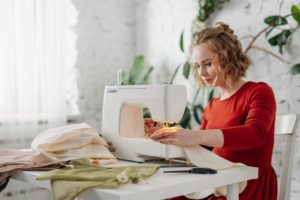
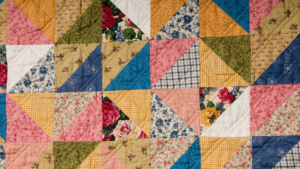
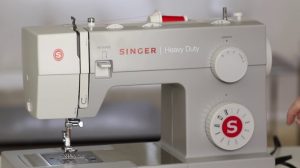
![Read more about the article Tips for Buying A Cheap Sewing Machine [Guide]](https://www.sewkitkit.com/wp-content/uploads/2018/04/best-cheap-sewing-machine-300x168.jpg)
